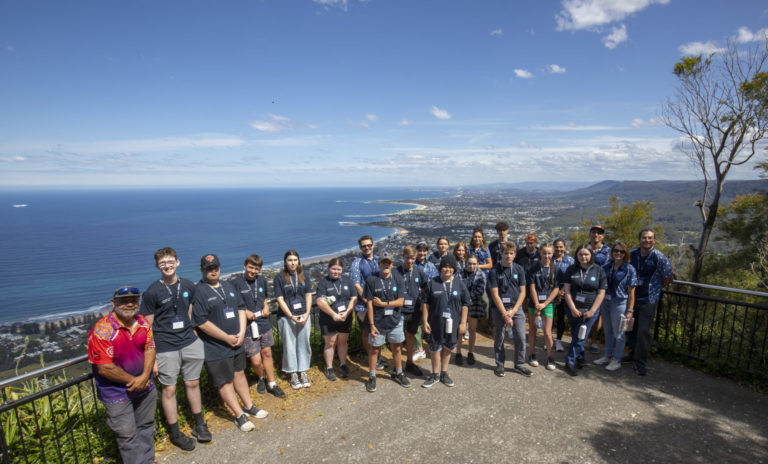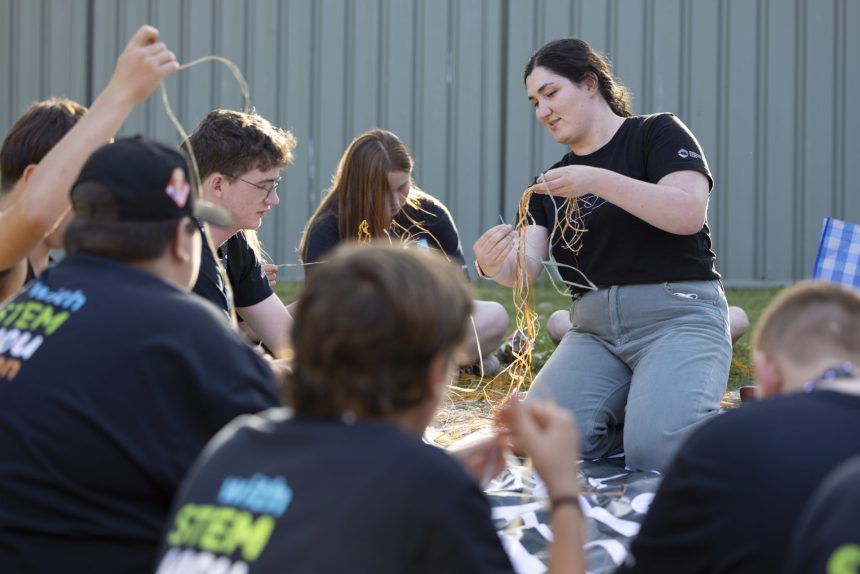Combining modern technology with ancient wisdom is a key strength of the CSIRO’s Deadly in Generation STEM program.
And when the program’s camp took place over four days in October, several schools in the Illawarra region of New South Wales (NSW) were represented, with 17 Aboriginal years eight – 10 students united by a shared interest in science, technology, engineering, and mathematics (STEM).
The camp covered a diverse range of subjects and activities, from coding drones and Aboriginal astronomy to bush medicine, dancing, and bush regeneration. For the curious students, it was a chance to experience hands-on experiments and mentorship that aimed to bridge the gap between Indigenous knowledge and local STEM opportunities.
STEM specialists and mentors engaged the students, with a focus on the theme of Caring for Country, delivered under the guidance of Cultural Knowledge Holders.
Cliodhna Maguire, a Gamilaroi woman living on Dharawal country, is the First Nations Youth Community Greening Officer at the Botanic Gardens of Sydney and was the camp mentor.
“I decided to participate because tying in culture, education, and science is everything that I do,” Ms Maguire said.
“It’s my passion and job and being able to do that with young kids and other deadly Aboriginal scientists, technicians, engineers, and mathematicians is inspiring.”
Mentorship connects STEM and Indigenous knowledge
Mentorship is a meaningful part of the camp and is designed to help guide the students to resources and people they can make deeper connections with.
Darumbal woman Letitia Holmes is a laboratory technician at BlueScope and was one of the Aboriginal engineers involved.
Ms Holmes shared her personal career journey with the students – a professional path she said she only discovered as an adult. She also shared how she connects dreaming to finding solutions, and the relationship between art and science in engineering.
“Be open to trying all parts of STEM. Try chemistry, biology, and physics. Try as many things as you can because later, you’ll have a much larger selection to choose from. Plus, a lot of the jobs we have nowadays didn’t exist five to ten years ago,” she said.
The camp began with students involved in a Cultural Ecological Walk to learn about traditional medicines and tools used by Dharawal people. Aunty May and Uncle Peter Button guided the students as they explored the region’s biodiversity, while also gaining insights into local plant knowledge and sustainable practices.
Aunty May, from Gunaikurnai and Dharawal Country, believes the delivery of STEM programs on Country has unique benefits. She thinks it’s important because it helps students understand their environment and learn how to care for it. Her hope is that students will not only learn about science but also discover who they are and what they can achieve.
“They need to know that anything is possible,” Aunty May said.
Ancient Indigenous science meets modern innovations
On day two of the camp, Uncle Richard Campbell from Gumaraa, an Illawarra-based Aboriginal tour group and education company, led a session on the physics of boomerangs. Students also explored their connections to modern innovations such as drones, helicopters, and wind turbines, with an interactive session, students were given the opportunity to code drones to discover how navigation techniques have evolved over time.
CSIRO Astronomer and Gija man, Stacy Mader utilised Murrivang, the 64-metre square Parkes radio telescope, to explore the sky for signs of pulsars. Students were also shown the power of celestial navigation and learned about traditional constellations and the significance of the night sky in Indigenous culture.
Regeneration through Indigenous knowledge
Vital aspects of restoring and conserving local ecosystems, including the importance of weeding, were also taught, with Ms Maguire then leading a session on the study of sustainable materials and design principles, to gain valuable insights into how Indigenous knowledge plays a pivotal role in creating environmentally friendly solutions.
“STEM brings together so many different concepts, people and perspectives to solve problems, and to interact with and understand the world,” Ms Maguire said.
“It helps to create a universal model where everyone is considered in engineering, technology and science. We’re considering all people, animals, flora, and landscape.
“It’s important because we’re understanding how great Australia is as a natural landscape and how Aboriginal people have learned, harnessed and improved it. They’ve worked alongside the land for many years and STEM can walk alongside that two-way thinking.”

When the camp ended, the students left with memories, new connections, artefacts reflecting their journeys, and the knowledge that STEM skills are reflected in their every day.
“I hope these students go home with an understanding that they are supported, seen and heard. Their journey doesn’t have to be linear; they can zigzag, hop, or take a step back,” Ms Maguire said. “Regardless of their path, they should be proud of who they are. Whether they’re a STEM scientist or not, as an Aboriginal person, they have science in their blood.”








